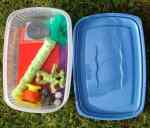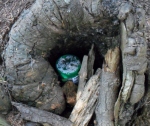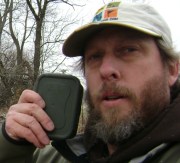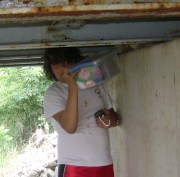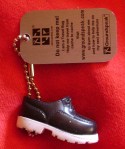In a previous blog, I introduced geocaching – the world-wide GPS hide-and-seek game. In this blog, I will take a look at the many variations of the game.
The Websites
By far, the largest and most popular geocaching website is Geocaching.com. Established in 2000, Geocaching.com currently has nearly 2 million active caches listed, and over 5 million registered users. Groundspeak, the parent company of Geocaching.com, also operates Waymarking.com, where one can “catalog, mark and visit interesting and useful locations around the world;” and Wherigo.com, which features “GPS-enabled games in the real world;” and Earthcache.org, which lists sites where one can “learn about a unique geoscience feature or aspect of our Earth.”
Geocaching.com is not the only site with geocache listings. One of the earliest competitors was Navicache.com. Established in 2001, Navicache grew fairly quickly as an alternative to Geocaching.com, but has faded greatly in popularity in recent years. Another 2001 competitor was Scout’s GPSGames.org. GPSGames was the first site to offer other GPS-based games in addition to geocaches. These games include Geodashing, Shutterspot, GeoVexilla, MinuteWar, GeoPoker, and Geodashing Golf. Buxley’s Geocaching Waypoint is a site that collects, compiles, and lists geocache data from multiple sites. Due to a legal battle with Groundspeak, Buxley’s stopped listing caches from geocaching.com in January, 2006.
In response to dissatisfaction on the part of many geocachers with Geocaching.com, Terracaching.com was created in the fall of 2004. Terracaching.com features less restrictive policies regarding the types of caches that could be hidden, a decentralized cache review system, and a rating / scoring system. Terracaching took off quickly, and is still the second-most popular alternative to Geocaching.com.
In the last few years, some additional geocache listing sites have been created, including Opencaching North America and OpenCaching.com, which was started by Garmin, a GPS manufacturer. Both of these sites were launched in 2010. Opencaching North America is actually part of a worldwide network of Opencaching sites (Opencaching.com is NOT part of this network, however.)
This list is not exhaustive, as new sites and variations pop up from time to time.
Cache Types
There are many different kinds of geocaches:
- The most basic type is the traditional cache. Traditional caches are simply a container, a logbook, and sometimes trade items, hidden at the posted coordinates.
- A multi-cache involves two or more locations. The geocacher visits one location to get the information to locate the next location, continuing until they find the final location.
- A puzzle cache involves solving some sort of puzzle, deciphering clues, working equations, or some other challenge in order to find the coordinates for the actual cache location. The puzzles can range from very simple to extremely complex.
- A Letterbox Hybrid cache incorporates elements from Letterboxing into a geocache. Letterbox caches always contain a stamp used to stamp that visitors can use it to record their visit.
- Event caches are gatherings for geocachers. These can include small gatherings of just a few cachers to mega-events with thousands.
- Virtual caches are caches that do not have a physical container, but rather involve finding an object that already exists at the posted coordinates. Some of the variations of virtual caches include webcam caches, Earthcaches, and Whereigo caches.
- “Locationless” caches (also known as “Reverse” caches) involve finding an object that meets a specific objective, then recording the coordinates where it was found.
- BIT caches are a tag with a code and sometimes a QR code – no container. BIT caches are logged by inputting the code on the online cache page.
Not all cache types are supported on all geocache listing websites. For example, Geocaching.com no longer lists any “locationless” caches, but Terracaching.com does; and Geocaching.com will not list any new virtual or webcam caches, but existing ones have been “grandfathered” and allowed to remain. Whereigo caches and Earthcaches are only listed on Geocaching.com, and BIT caches are only on Opencaching North America.
Filed under: Geocaching | Tagged: Geocaching, Geocaching.com, Global Positioning System, GPS, Groundspeak, Letterboxing, Opencaching.com | 1 Comment »


